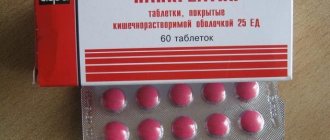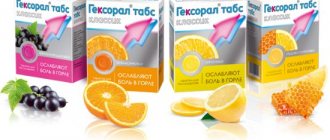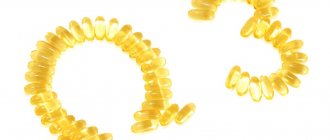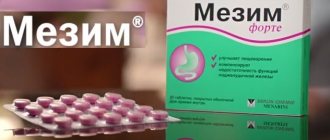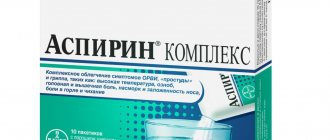Lactation is an important and responsible period, during which a woman is more attentive and scrupulous about her health. However, no one is immune from colds and other inflammatory processes even at such a time. A nursing mother carefully approaches the issue of choosing medications for therapy, since they tend to pass into breast milk and, accordingly, affect the child’s body.
Miramistin is considered one of the widely used drugs. This is a broad-spectrum antiseptic that effectively destroys fungi, viruses, and bacterial cells. Pediatricians and neonatologists have confirmed the safety of using the medication during breastfeeding.
Benefits of Miramistin
Miramistin is an antimicrobial agent that is active even against some resistant strains of bacteria. This gives it great advantages over many drugs. In addition, the positive properties of the drug are as follows:
- It destroys the cell membranes of pathogens, which means that it acts on them instantly and destructively, and does not simply suspend the vital activity of microbes.
- Its effectiveness is several times higher than that of similar drugs based on chlorhexidine, iodine and some others.
- The range of its action is huge. It destroys Escherichia coli and Pseudomonas aeruginosa, Salmonella, strepto- and staphylococci, and is also active against chlamydia, myco- and ureaplasmas, Trichomonas, gonococci, even HIV and hepatitis. This is not a complete list, which is why Miramistin can be used for the prevention and treatment of most infectious diseases.
- The drug affects, in addition to pathogenic microbes, fungi and viruses. Therefore, it is useful to use for combined infections.
- Added to the main therapeutic effect is its ability to enhance recovery - tissue regeneration. Therefore, when treating a wound surface with Miramistin, it heals faster.
- It is noteworthy that the drug does not penetrate through the skin and mucous membranes into the depths of the tissues. This property ensures complete safety when used in pregnant women, as well as during lactation.
- Miramistin does not cause tissue irritation, and allergic reactions to it are extremely rare.
We recommend reading the article about Viferon during lactation. From it you will learn about the drug and indications for use, contraindications, features of use by a nursing mother and whether it is necessary to stop breastfeeding.
And here is more information about sea buckthorn during breastfeeding.
Analogues of the drug
- Lizobact is considered a fairly safe analogue drug . Following the dosage, the drug is used to treat inflammatory processes in the throat.
- Ingalipt is considered an approved drug during pregnancy . The composition is available in spray form and is effective.
- Experts recommend the use of hexoral . The drug is used to treat inflammatory processes and is an effective antimicrobial and antiviral agent.
- Tantum Verde is considered a safe product . Indications for use are close to miramistin.
- Traditional methods are highly effective . During the cold season, it is worth paying attention to preventive measures and strengthening the immune system.
We recommend reading: Oscillococcinum during breastfeeding
Even absolutely harmless products are used during pregnancy and breastfeeding as prescribed by a specialist. The substance may negatively affect the baby's health. The correct dosage is important.
Contraindications to the use of Miramistin during lactation
In exceptional cases, the drug can cause some complications, for example, if it is taken incorrectly or if the dose is repeatedly exceeded. For all groups of the population (adults, children, elderly, pregnant women, etc.) Miramistin is one of the safest remedies. This is due to its exclusively local action and the absence of a systemic reaction.
But still, caution should be exercised if there have ever been episodes of an increased reaction to the drug, including in close relatives.
Watch the video about the drug Miramistin:
Instructions for use
The method of using the drug depends on the form of release and diagnosis. Before using Miramistin, a nursing mother should definitely consult her doctor. He will determine the dosage and duration of therapy, and will also decide whether it is preferable to prescribe an ointment or a solution.
Treatment of wounds and stitches
- The ointment is applied in a thin layer to a gauze bandage and applied to the damaged surface 2 times a day.
- Damage to the skin is treated directly with the spray. You can make lotions with a medicinal solution.
Cracked nipples
- After each feeding, the nipples are lubricated with Miramistin solution and left until completely dry. The liquid is quickly absorbed into the skin, so the active ingredients cannot enter the baby’s stomach with milk.
- Miramistin ointment is applied at night. It not only promotes wound healing, but also eliminates peeling, restores elasticity and softness of the skin. Before feeding, the breasts are washed with water or a liquid solution of Miramistin and left open for 10–15 minutes.
It is not necessary to wash off the antiseptic drug, since it is completely hypoallergenic and does not have a negative effect on the baby’s health.
During the period of feeding a baby, 10–15% of women develop cracked nipples, which Miramistin ointment helps to cope with.
Treatment of gynecological diseases and inflammation of the female genital organs
- Moisten a gauze swab with liquid and insert it into the vagina. Perform the procedure at night.
- Dilute 2 tbsp. l. solution in 1 liter of warm water and pour 1/3 of its volume into a shallow basin to take a sitz bath. The duration of the procedure is 10–15 minutes, once a day until complete recovery.
- Insert 5–10 ml of solution into the vagina using a bottle with a nozzle. After douching, it is not recommended to empty the bladder for two hours.
This method is effective for the prevention of sexually transmitted diseases. In this case, the procedure is carried out no later than 2 hours after the act.
Treatment of colds and ENT diseases
- Gargling. 30–40 minutes before the procedure, you must refuse to eat. It is not recommended to swallow the solution. Rinse the oropharynx well with the liquid for 1 minute. At least 10–15 ml of the medicinal product is used.
Gargling with Miramistin is an effective way to cope with pain and fight infection
- Irrigation of the throat. The procedure is performed using a special nozzle by pressing 3 times no more than 5 times a day.
- Flushing the sinuses. The nasal passages are cleared of pus and mucus and washed with 10 ml of Miramistin. In addition, it is recommended to instill the solution into the nose.
- For otitis, moisten the turundum in 2 ml of solution and insert it into the external auditory canal.
Breastfeeding women should note that the drug should be used at the first sign of illness. The use of Miramistin will help to quickly suppress the activity of pathogenic microorganisms and speed up the healing process.
Indications for treatment with Miramistin
Miramistin is available in the form of an ointment, as well as a 0.01% solution. In certain situations, it is preferable to use one or the other form. During lactation, a woman can use Miramistin if the following problems occur:
- To accelerate the healing of all types of wounds, including burns, frostbite, etc.
- For treating feet, nails, and skin areas with fungal infections.
- For all forms of external candidiasis, including localization in the oral cavity, vagina.
- To prevent the transmission of sexually transmitted infections, including HIV, hepatitis after unprotected sexual intercourse.
- For the treatment of any inflammatory diseases in the vagina and uterine cavity.
- For the treatment of postpartum injuries - on the perineum, external genitalia, etc.
- If episodes of cystitis or urethritis occur.
- For inflammation of the oral cavity of various nature: in the case of periodontitis, gingivitis, stomatitis.
- It is also effective to use Miramistin as part of complex therapy for otitis media, sinusitis, tonsillitis and other ENT diseases.
Composition and principle of action
The drug is available in the form of a colorless liquid, tasteless and odorless. Packaging – polyethylene bottle with a screw cap, volume 50-500 ml. The kit includes nozzles: urological, gynecological, with a pump and a sprayer. Vials with a lid are suitable for procedures that require a large amount of solution - dressings, irrigation, external treatment of wound surfaces.
The simple and safe composition of Miramistin justifies the widespread use of the drug, including for hepatitis B.
Components
Table 1 - List of Miramistin components
| Substance: | Quantity: |
| 3-myristoylamino propyl ammonium | 0.1 g |
| sterile water | 1000 ml |
The drug is similar in action to antibiotics - it inhibits the spread of inflammation and kills microbes. But, unlike antibacterial agents, it works only in contact with the source of irritation, does not penetrate the systemic bloodstream, and does not change the composition of breast milk. Therefore, Miramistin is effective as an antibiotic, and at the same time absolutely safe during breastfeeding.
A powerful antiviral effect gives the drug the ability to inhibit even complex viruses, such as HIV and herpes. If there is a risk of contact infection, the mucous membranes must be treated with Miramistin solution within two hours (for example, after sexual intercourse).
Expert opinion
Sokolova L. S.
Pediatrician of the highest category
In light of the pandemic: Miramistin is used as a prophylactic agent for treating surfaces on which coronavirus may be present: household items, hand skin.
Mechanism of action
- activates phagocytosis - absorption of pathogenic microorganisms by immune cells;
- stimulates circulating blood monocytes and tissue macrophages;
- activates local immunity;
- promotes tissue regeneration.
The result is the destruction of pathogenic fungi, aerobic and anaerobic bacteria, and viruses. In this case, the effect of the drug is not accompanied by an allergenic or tissue irritating effect. The skin and mucous membranes do not change color or structure after applying the solution.
How to use Miramistin while breastfeeding
Miramistin can be used during breastfeeding without fear for the baby’s health. The direct method of application will depend on the form of pathology with which the woman is fighting.
When applying the drug to the skin or mucous membranes, a slight burning sensation may occur for 20 - 30 seconds. This should not be alarming; this effect is considered normal and is not an indication for discontinuing the use of the medicine.
If red spots, blisters, itching or other signs of an allergic reaction appear, you should immediately stop use and seek medical help.
On the skin
It is better to check the amount of Miramistin used and the form of the medicine with your doctor. In some cases, it is more effective to use ointment, in others - to irrigate with a solution. Most often, Miramistin is used as part of complex therapy with other drugs.
- Method 1. Apply ointment to a gauze swab. The bandage is applied to the damaged part after a burn, injury, etc.
- Method 2. It is effective to simply wash wounds or purulent cavities with Miramistin solution. You can make lotions with a medicinal solution.
In the vagina
The solution can be used separately or in combination with physiotherapy, for example, with electrophoresis.
- Method 1. Soak a gauze swab with Miramistin solution and place it in the vagina overnight.
- Method 2. You can douche with the drug. This method is also effective for preventing the transmission of sexually transmitted infections through unprotected contact.
- Method 3. It is useful to carry out sitz baths with a solution. This is recommended for treating sutures after childbirth in case of suppuration, as well as for proctitis, external hemorrhoids, etc.
In the throat and oral cavity (for tonsillitis and other diseases)
To treat inflammatory processes on the tonsils, as well as infections in the oral cavity (gingivitis, stomatitis and others), rinse with the solution several times a day. On average, one procedure should require about 10 ml of solution.
You can also irrigate the mucous membranes using a special spray nozzle up to 4 - 5 times a day.
Into the nose
For sinusitis, it is recommended to rinse the nasal cavity with a solution; you can also instill several ml of solution.
In ear
For otitis media, it is useful to apply 3-4 drops of Miramistin into the external auditory canal of the affected ear.
For cystitis or urethritis
In this case, it is recommended to use special urological attachments, as well as use sitz baths.
Side effect
A side effect may be a slight burning sensation. If the symptom disappears after twenty seconds, the reaction is considered normal. In acute forms, use should be discontinued. No cases of intolerance or overdose have been recorded.
When using any medicinal substance, it is necessary to monitor the child’s health status. Any doubtful signs should be reported to the treating specialist.


